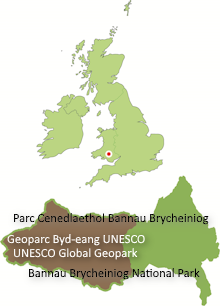The United Nations General Assembly has designated 13th October as “International Day for Disaster Reduction” to focus on ways of making nations and communities resilient to disasters.
United Nations figures for 7,255 significant disasters which took place around the globe over the last 20 years show that floods and storms account for the biggest proportion:
- Floods 3,148 (43.4%)
- Storms 2,049 (28.2%)
- Earthquakes 563 (7.8%)
- Extreme temperatures 405 (5.6%)
- Landslides 378 (5.2%)
- Droughts 347 (4.8%)
- Wildfires 254 (3.5%)
- Volcanic activity 99 (1.4%)
- Mass movement (dry) 12 (0.2%)
Our experience
Here in the UK we are fortunate that we suffer less than many parts of the world. That is in part due to our location; our climate on Europe’s north-western fringe is generally mild, our part of the Earth’s crust is seismically quiet and we are a developed nation which has put in place many safeguards to protect life and property against natural disasters.
But we are not immune to nature’s moods; 2018 and 2019 have seen Wales experience intense cold and snowfall[link], heat and drought[link], fires[link], landslides[link] and even a small earthquake[link] shaking the region. Storm Callum[link] brings damaging winds and heavy rain to South Wales even as Disaster Reduction Day 2018 was marked.
The challenge
Geological processes and weather systems will always lead to significant natural events happening, just as they have in the past. However we can help prevent them becoming disastrous by being prepared through for example building flood defences, practising earthquake drills, well-informed planning and construction of housing, industry and infrastructure. On the big scale we can all help keep man-made climate change within bounds – the recent IPCC report[link] highlighted the huge challenge in keeping the rise of average global temperature to no more than 1.5o above pre-industrial levels.
Our past part
Wales and indeed the communities and landscapes which make up our C21st Geopark were in at the start of industrialisation; we celebrate the industrial heritage along our southern fringe, localities where coal, ironstone, silica rock and limestone were mined or quarried to feed the ironworking industry which grew from the late eighteenth century. As one of the birthplaces of the Industrial Revolution, this place witnessed the start of arguably the most significant transformation of humanity in its history, a 250 year transformation which has wrought unprecedented change on the natural world too and is indeed increasingly changing the world’s climate.
Our present and future role
The organisations and individuals who come together as partners in Fforest Fawr UNESCO Global Geopark are determined in their different ways to mitigate the effects of climate change. We continue, for example, to support alternative/low carbon means of energy production and have supported many micro-hydro schemes around the Geopark and wider National Park which not only provide us with power more sustainably but bring benefits to local communities, helping them become more economically resilient too. We support green accreditation schemes for tourism businesses which deliver a range of environmental benefits, amongst them lowered energy use and hence reduced carbon dioxide emissions. We continue to restore upland peat bogs to health as at Waun Fignen-felen on the Black Mountain and on the Hatterrall ridge in the east, thus maintaining their vital role as carbon stores. Renewed sphagnum growth in healthy bogs actually soaks up more CO2. Our promotion of electric and hybrid fuel vehicles is also part of our effort.
These approaches we are taking in South Wales deliver benefits for our local communities and landscapes but ultimately too for other communities and landscapes around the globe – lower atmospheric carbon dioxide levels mean better containment of temperature rises and in turn, fewer disasters for all of us.



